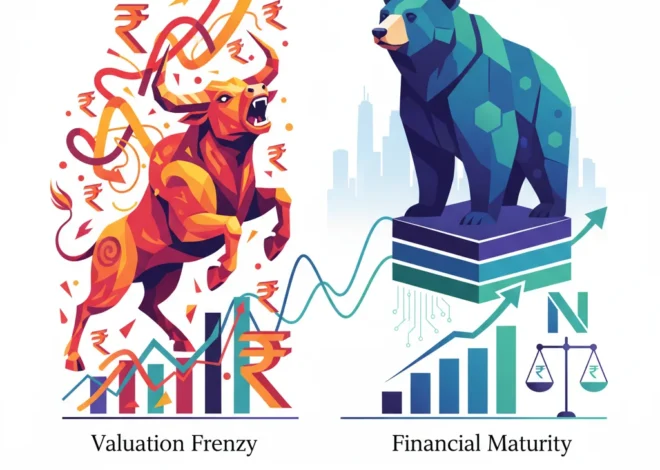
Vinted’s €8 Billion Gambit: The AI and Cloud Engine Behind a Fashion Revolution
You might know Vinted as that app on your phone for selling last season’s jacket or snagging a vintage bargain. But behind the simple interface of swapping pre-loved clothes lies a technology powerhouse quietly engineering the future of e-commerce. The latest news hitting the financial world is that the Lithuanian startup is exploring a secondary share sale that could value the company at a staggering €8 billion.
Let that sink in. A company dedicated to second-hand goods is knocking on the door of a valuation that rivals established giants. This isn’t just about the growing popularity of sustainable fashion; it’s a testament to a sophisticated ecosystem built on cutting-edge software, cloud infrastructure, and a deep, strategic implementation of artificial intelligence.
For entrepreneurs, developers, and tech professionals, the Vinted story is more than just a business headline. It’s a masterclass in scaling a platform, harnessing data, and building a defensible moat in a competitive market. So, let’s unpack what this €8 billion valuation really means and look under the hood at the technology that makes it all possible.
Decoding the Deal: Why a Secondary Sale and Not an IPO?
First, let’s clarify what this move signifies. Vinted isn’t planning a traditional Initial Public Offering (IPO), where a company offers new shares to the public to raise capital. Instead, they are exploring a “secondary share sale.”
So, what’s the difference?
- IPO (Initial Public Offering): The company creates and sells new shares to the public. The money raised goes directly to the company to fund expansion, R&D, or pay down debt.
- Secondary Share Sale: Existing shareholders—typically early investors, founders, and long-term employees—sell their private shares to other private investors, like institutional funds. The money goes to the selling shareholders, not the company.
This is a crucial distinction. By opting for a secondary sale, Vinted is signaling a few things. It’s a move to provide liquidity for those who took a risk on the company in its early days, allowing them to realize returns on their investment without the immense pressure, regulatory scrutiny, and market volatility of a full-blown IPO. In today’s choppy economic waters, this is an increasingly popular and pragmatic strategy for mature startups. It rewards the early believers and keeps the company agile and private as it continues to scale.
The Unseen Engine: The Tech Stack Powering a Global Marketplace
A valuation of €8 billion isn’t built on clothes alone. It’s built on a platform that can seamlessly handle millions of users, listings, and transactions every single day across multiple countries and languages. This is where Vinted transforms from a marketplace into a formidable tech company.
Artificial Intelligence and Machine Learning as the Core
Artificial intelligence is the lifeblood of Vinted’s user experience. It works tirelessly behind the scenes to make the platform feel personal, safe, and efficient. Here’s how:
- Hyper-Personalization: When you open the app, the feed you see isn’t random. It’s a curated gallery crafted by machine learning algorithms that have analyzed your past searches, likes, purchases, and even what you’ve lingered on. This AI-driven discovery engine is critical for keeping users engaged and driving sales.
- Smarter Search: Vinted processes millions of new listings. Finding the right item would be impossible without sophisticated search capabilities. This includes Natural Language Processing (NLP) to understand conversational queries and, increasingly, computer vision to allow for image-based searches. Want to find a dress that looks like one you just saw? AI makes that possible.
- Platform Integrity and Cybersecurity: With any marketplace comes the risk of fraud, scams, and counterfeit goods. Vinted leverages AI models for large-scale automation of content moderation and fraud detection. These systems can spot suspicious listing patterns, flag fake profiles, and analyze user reports far more efficiently than human teams alone, forming a critical layer of the platform’s cybersecurity posture.
This deep integration of AI is a perfect example of how modern tech companies build a competitive advantage. It’s not just a feature; it’s fundamental to the platform’s operation.
Beyond the Billions: How Elon Musk's "Frugal" Lifestyle Fuels a Revolution in AI and Tech
The Cloud: An Architecture Built for Scale
Imagine the data load: tens of millions of active users, hundreds of millions of items listed, each with multiple high-resolution photos, descriptions, and a history of messages and transactions. This cannot run on a few servers in a back office. Vinted operates on a massive, elastic cloud infrastructure.
This SaaS-like architecture provides several key advantages:
- Scalability: The platform can handle huge traffic spikes—like on a weekend or after a marketing campaign—without crashing.
- Global Reach: Cloud providers have data centers worldwide, allowing Vinted to offer a fast, responsive experience to users in Spain, Germany, the US, and beyond.
- Innovation Speed: By using cloud services, Vinted’s developers can focus on building new features and improving their programming logic instead of managing physical hardware. This accelerates the pace of innovation.
The Booming Market for Re-Commerce
Vinted’s success is also perfectly timed with a massive cultural shift. Consumers, particularly younger generations, are increasingly embracing the circular economy for both economic and environmental reasons. The stigma once associated with second-hand goods has vanished, replaced by a badge of honor for smart, sustainable consumption.
The numbers back this up. According to the 2023 Resale Report by ThredUP, another major player in the space, the global second-hand apparel market is expected to nearly double by 2027, reaching a value of $350 billion. Vinted is riding this wave, but it’s not alone. The space is crowded and competitive.
Here’s a quick look at how Vinted stacks up against some of its main rivals:
| Feature | Vinted | Depop | Poshmark |
|---|---|---|---|
| Business Model | No selling fees. Buyers pay a “Buyer Protection” fee. | 10% fee on total transaction value for sellers. | 20% fee for sales over $15; flat $2.95 fee for sales under $15. |
| Target Audience | Broad, value-conscious audience looking for everyday wear. | Gen Z, focused on unique, vintage, and streetwear styles. | Millennials and older, more focused on brands and “social commerce.” |
| Key Feature | Fee-free selling model, focus on C2C simplicity. | Instagram-like social feed, strong community and influencer culture. | “Posh Parties” (real-time virtual shopping events), social engagement tools. |
| Geographic Focus | Strong dominance in Europe, expanding in North America. | Strong in the UK, US, and Australia. | Primarily focused on North America. |
Vinted’s “no selling fees” model was a disruptive innovation that significantly lowered the barrier to entry for casual sellers, helping it achieve immense scale, particularly in Europe. While competitors focused on niche communities or social features, Vinted focused on volume and ease of use, a strategy that has clearly paid off.
The Trojan Bus: Can Your City Be Switched Off From Halfway Across the World?
What This Means for the Future
Vinted’s potential €8 billion valuation is a landmark moment for the circular economy and a powerful case study for the tech industry. It proves that a “re-commerce” platform can achieve the same scale and technological sophistication as top-tier e-commerce and social media companies.
For tech professionals, from software engineers to data scientists, this highlights the immense opportunities within this sector. The challenges are complex and fascinating: building recommendation engines that truly understand style, developing logistics automation to simplify shipping, and strengthening cybersecurity to maintain trust among millions of users. The demand for talent in AI, cloud architecture, and mobile app development in this space will only continue to grow.
For entrepreneurs, the Vinted story is a lesson in market timing and strategic differentiation. It found a gap by focusing on a user-friendly, low-cost model and scaled it aggressively before competitors could catch up. The company’s continued success will depend on its ability to keep innovating, perhaps by further automating the listing process or using AI to create personalized style lookbooks from its vast inventory.
The Call is Coming From Inside the Cloud: Unmasking the New Wave of AI Voice Phishing
As Vinted’s early investors and employees potentially head for a well-deserved exit, the company itself is standing at a new beginning. It’s no longer just a promising startup; it’s a mature, technology-driven leader shaping a more sustainable future for commerce. And at an €8 billion valuation, the world is clearly taking notice.


